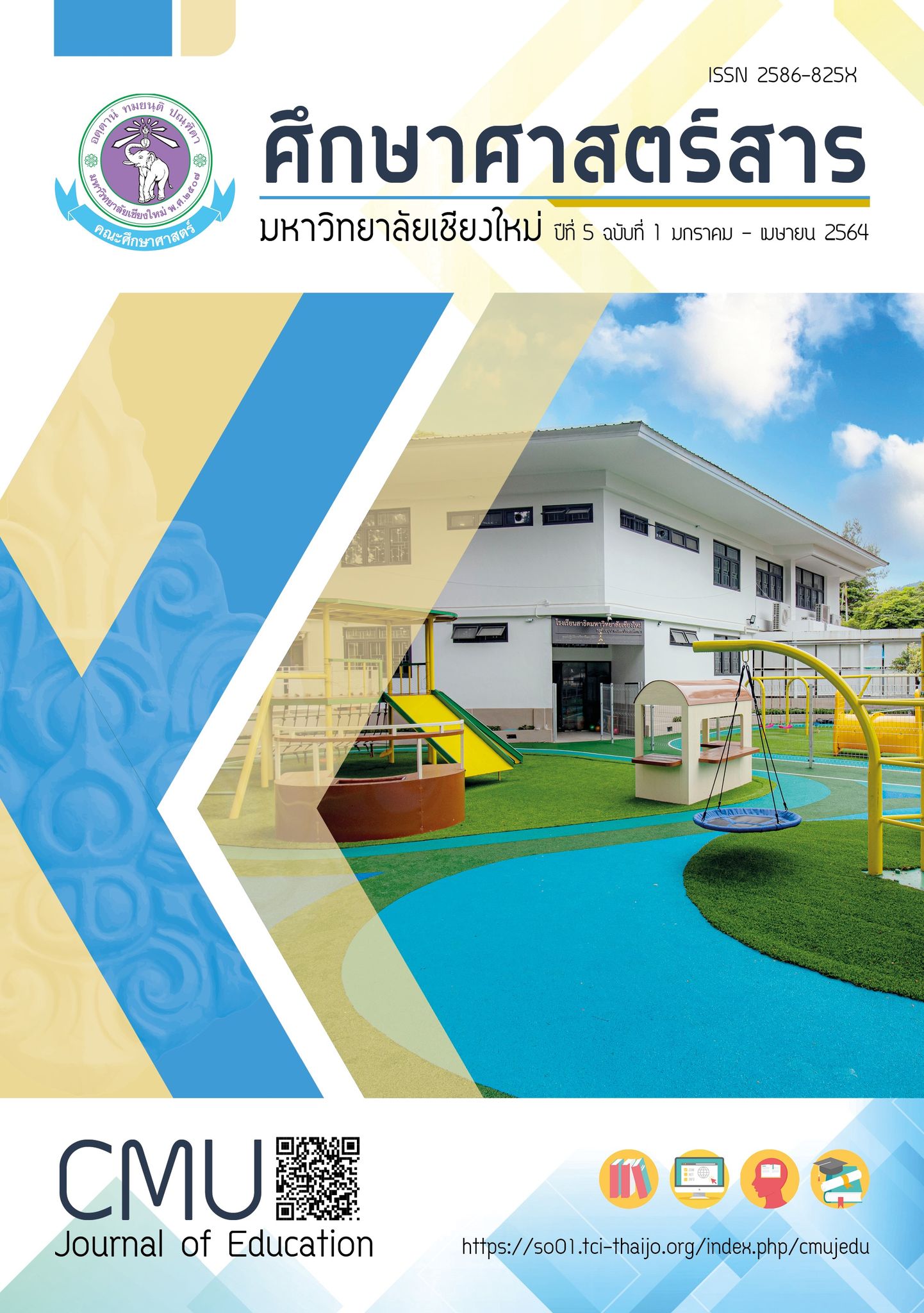Critical Thinking Ability on Environmental Problems of Twelfth Grade Students
Main Article Content
Abstract
This research aimed to to study students' critical thinking ability of environmental problems 35 sixth-grade. The researcher using a 40-item, multiple-choice test in combination with prompts for written reasoning in each item regarding five aspects of Watson and Glaser’s (2006) conceptual framework of critical thinking (i.e., Assumption, Evaluation, Deduction, Inference, and Interpretation). Quantitative data were analyzed using average percentage score and qualitative data were analyzed using content analysis. Results show that students have scored an average percentage of 48.28. When comparing five components, it was found that students identify the most assumptions, followed by evaluation, deduction, inference, and interpretation respectively. Qualitative data analysis confirms that students' ability of critical thinking in environmental problems is low. However, learning management practices should be tailored to develop students' critical thinking abilities.
Article Details

This work is licensed under a Creative Commons Attribution-NonCommercial-NoDerivatives 4.0 International License.
หากผู้เสนอบทความมีความจำเป็นเร่งด่วนในการตีพิมพ์โปรดส่งลงตีพิมพ์ในวารสารฉบับอื่นแทน โดยกองบรรณาธิการจะไม่รับบทความหากผู้เสนอบทความไม่ปฏิบัติตามเงื่อนไขและขั้นตอนที่กำหนดอย่างเคร่งครัด ข้อมูลของเนื้อหาในบทความถือเป็นลิขสิทธิ์ของ Journal of Inclusive and Innovative Education คณะศึกษาศาสตร์ มหาวิทยาลัยเชียงใหม่
References
กระทรวงศึกษาธิการ. (2551). หลักสูตรการศึกษาขั้นพื้นฐาน พุทธศักราช ๒๕๕๑. กรุงเทพฯ: โรงพิมพ์ชุมนุมสหกรณ์การเกษตรแห่งประเทศไทยจำกัด.
กระทรวงศึกษาธิการ. (2560). มาตรฐานการเรียนรู้และตัวชี้วัดกลุ่มสาระการเรียนรู้คณิตศาสตร์ วิทยาศาสตร์ และสาระ ภูมิศาสตร์ ในกลุ่มสาระการเรียนรู้สังคมศึกษาศาสนา และวัฒนธรรม (ฉบับปรับปรุง พ.ศ.2560) ตามหลักสูตรแกนกลางการศึกษาขั้นพื้นฐาน พุทธศักราช 2551.
ธูปทอง กว้างสวาสดิ์. (2561). การสอนคิดวิจารณญาณ. วารสารราชพฤกษ์ คณะศึกษาศาสตร์ มหาวิทยาลัยมหาสารคาม,16(3), 1-9.
วราพรรณ สุกมาก อาพัทธ์ เตียวตระกูล และอังคณา อ่อนธานี. (2560). การพัฒนากิจกรรมการเรียนรู้โดยใช้ปัญหาตามสภาพจริงเป็นฐานเพื่อส่งเสริมความสามารถในการคิดอย่างมีวิจารณญาณ เรื่องทรัพยากรธรรมชาติและ สิ่งแวดล้อมอันล้ำค่าสำหรับนักเรียนชั้นประถมศึกษาปีที่ 6. วารสารมนุษยศาสตร์และสังคมศาสตร์ บัณฑิตวิทยาลัย มหาวิทยาลัยราชภัฏพิบูลสงคราม, 11(1), 172-186.
วัชรพล จันทรวงศ์ และชนินันท์ พฤกษ์ประมูล. (2562). ความสามารถและกระบวนการคิดอย่างมีวิจารณญาณ ในเนื้อหา ฟิสิกส์ เรื่อง การเคลื่อนที่แนวตรงของนักเรียนชั้นมัธยมศึกษาปีที่ 4. วารสารวิชาการและวิจัยสังคมศาสตร์, 14(3), 15-30.
ลือชา ลดาชาติ, มนัส ภูทวี และลฎาภา ลดาชาติ. (2562). สมมติฐานต่อความก้าวหน้าในการเรียนรู้ เรื่อง ปัญหาหมอกควัน ในภาคเหนือของประเทศไทย. วารสารสังคมศาสตร์บูรณาการ, 6,116-160.
Arsalan Mujahid Ghouri. (2011). ENVIRONMENTAL POLLUTION: ITS EFFECTS ON LIFE AND ITS REMEDIES. International Refereed Research Journal, 2(2), 276-285.
Dede, C. (2010). Comparing frameworks for 21st century skills. In J. Bellance, & R. Brandt (Eds.), 21st century skills: Rethinking how students learn (pp. 51-76). Bloomington: Solution Tree Press.
Dwyer, C. P., Hogan, M. J., & I. Steward. (2011). The evaluation of argument mapping as a learning tool: comparing the effects of map reading versus text reading on comprehension and recall of argument. Thinking Skill and Creativity journal, 5(1), 16-22.
Facione, P. A. (1990). Critical thinking: a statement of expert consensus for purposes of educational assessment and instruction. California: The California Academic Press.
Halil I. brahim Akyz et al. (2009). The effects of blended learning environment on the critical thinking skills of students. Procedia Social and Behavioral Sciences 1, 1744-1748.
Holmes, N. G., Wieman, C. E., & Bon, D. A. (2015). Teaching Critical Thinking. Proceedings of the National Academy of Sciences of the United States of America, 112(36), 11199-11204.
Judith A, Boss. (2010). Think: Critical Thinking and Logic Skill for Everyday Life, New York: McGraw-Hill Companies Inc.
Koh, K. H., Tan, C., & Ng, P. T. (2012). Creating thinking schools through authentic assessment: The case in Singapore. Educational Assessment Evaluation and Accountability, 24(2),1-15.
O’Brien, T.L. (2013). The Development of Critical Thinking Skills. Action Research seminar, Franklin Pierce University.
Pretek, E., & Bedir, H. (2018). An Adaptable Teacher Education Framework for Critical Thinking in Language Teaching. Thinking Skills and Creativity, 28, 56-72.
Sarita Cargasa Sheri Williamsb & Martina Rosenberg. (2017). An approach to teaching critical thinking across disciplines using performance tasks with a common rubric. Thinking Skills and Creativity, 26, 24-37
Williams, D. P. and McKenzie, K. J. (2013). Context and problem-based learning: an integrated approach. Paper presented at 5th Eurovariety in Chemistry Education. Limerick: University of Limerick.

